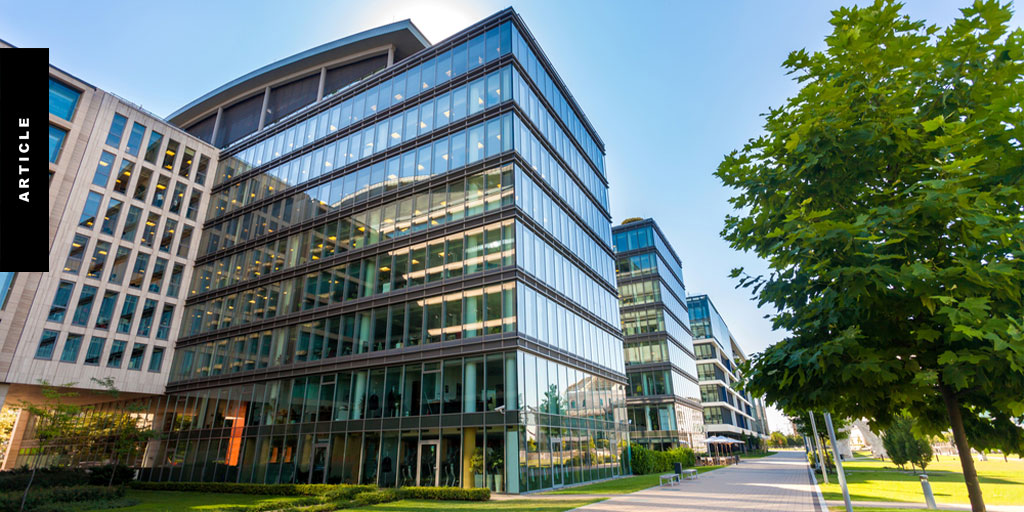As a commercial property owner, it is important to understand your responsibilities and ensure that you have the right insurance coverage to protect your property against potential damages.
Unoccupied buildings
During the pandemic, commercial buildings were often unoccupied temporarily or indefinitely. That can still happen today with the soft tenancy market in some parts of the country.
Nationally, the office vacancy rate is 14.3% as of April, while office values continue to fall. Meanwhile, BIS Oxford Economics has forecast a 13% vacancy rate for commercial property overall by the end of this year.
Even if you ‘mothball’ your unoccupied building, you’ll still need to manage the risks, including:
- Liability for visitors or trespassers who suffer injury or damage
- Fire safety, and
- Security to thwart malicious damage, such as graffiti as well as theft of materials/equipment, even copper cable theft
- Rubbish dumping, including asbestos
Protecting your unoccupied building means managing the risks to your asset’s value. Consider investing in solar-powered security lighting and smart security systems if the premises are unoccupied for a long period.
Insurers regard an unoccupied building as separate from one that’s vacant. To clarify, a vacant building has nothing in it – no people, property or personal items.
However, commercial property insurance usually has specific limits on how long premises can be unoccupied before the cover is voided. Usually, it can be unoccupied for 90 to 120 days.
Environmental & climate risks
More extreme weather may impact your commercial premises, depending on its location.
Protect your premises against the key environmental and climate risks:
- Floods: Elevate stock and electrical transformers or panels if they’re usually on the ground floor; investigate installing flood gates and barriers
- Bushfires: Keep vegetation clear from your building; install external sprinklers and have a bushfire plan
- Windstorms: Check roofing is installed with roof screws and fastener places, and for an expected severe storm, cover windows and doors with thick plywood
- Hailstorms: These will most likely damage vehicles, outdoor signage, skylights and roof-mounted equipment
Business Queensland has a guide to help small-to-medium-sized businesses prepare for climate-related risks. Here’s an insight into their strategy, and a link to identifying and managing business risks.
Protecting your business property against electricity/fire
An electrical fire can start on your commercial premises due to:
- Faulty appliances
- Overloaded power boards and sockets
- Issues with light fittings
- Faulty wiring and fuse box
- Stock stored near electrical equipment
- Overheated equipment
As well, cooking equipment, human error, boilers, water heaters and furnaces present fire risks.
Commercial property owners and property managers are responsible for making sure their buildings comply with relevant fire safety regulations, such as the Australian building codes. However, your leasing agreement might stipulate a tenant has specific responsibilities for maintaining fire safety gear.
Depending on your agreement, ensure the fire management system is maintained, tested and updated, including smoke detector batteries. Organise regular fire drills, staff training and adequate fire-fighting equipment on hand, such as appropriate extinguishers and fire blankets.
Your responsibility as a commercial property owner
Typically, you’ll need to take care of:
- The building, including public and common areas
- Shared services and equipment that your tenants use
- Maintaining the buildings’ operational, such as ventilation, fire-safety systems, etc. that support tenants
While your leasing agreement may have delegated some responsibilities to tenants, you still have oversight. For example, tenants’ modifications or changes such as erecting signage, using a stairwell for storage, locking a fire escape, or reconfiguring the space could render your building non-compliant. Even furniture placed near balconies or balustrades is a risk.
Ensure they discuss any alterations to the building and, where needed, check with a certified practitioner. You may wish to be explicit in the lease to prohibit sub-letting and specific activities, such as illegal businesses.
What commercial property insurance covers
A standard commercial property insurance policy protects your business from damage to the building structure, its utilities and services, and structural improvements you’ve made. That cover could extend to portable buildings and shipping containers usually housed on the site and their contents.
It typically covers:
- Fire
- Lightning
- Explosions
- Storm damage
- Burst of leaking pipes
- Accidental or malicious damage
- Earthquakes or tsunamis
- Industrial accidents
Whether you have an unoccupied business or fully operational, we can negotiate on your behalf with the insurer about how that change affects your premium and coverage.

